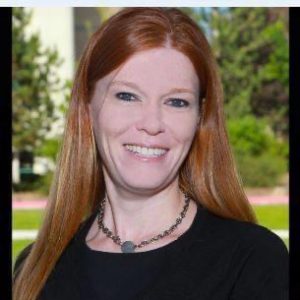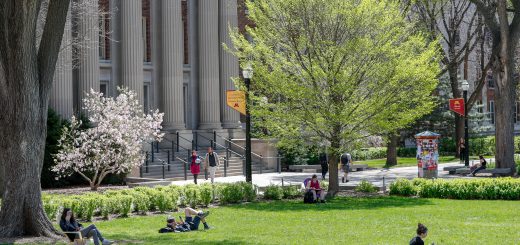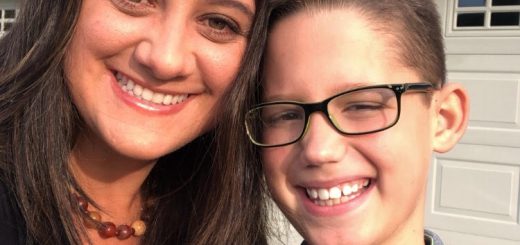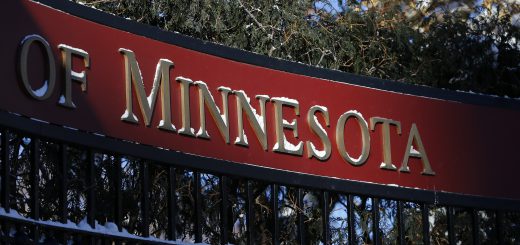Online switch gets mixed reviews
Nontraditional students welcome the flexibility but say quality needs to improve.

By: Lew Blank, Yves De Jesus, Grace O’Neil, Charles Ouellette
For Christina Kremer, the shutdown of in-person classes because of COVID-19 was no big change: She had already enrolled entirely in online courses for her last semester to accommodate her busy schedule of working full-time and raising a child.
“I have been doing this distance learning all semester, so nothing has changed for me,” she said.
Even when the University extended spring break to jump start that transition, her professors said their online students should just continue with the current pace of learning.
“My professors sent out emails saying ‘Hey, we’re not doing that because we’re already online and we have it figured out!’ ” she said.
The shift to online classes because of COVID-19 has dramatically upended the experience of university students here and across the country. For some nontraditional students, working a full-time job and taking care of their family has complicated the transition and added stresses they did not expect.
But for many others, the experience has been a welcome adjustment and one they hope will spur more online options at the University even after in-person classes resume — regardless of when that will be. While the University has not ruled out students in classrooms on campus this fall, they are looking at a range of potential solutions that include hybrid or online classes.
A mixed picture
Kremer, for one, prefers online courses to in-person ones. She said with traditional courses, students need to comply with set schedules. But online courses allow flexible engagement, which is tailor-made for nontraditional student realities, such as full-time work and parenting.
“I wish that more majors would give that option because not everyone can be a traditional student or necessarily wants to,” Kremer said. “If I could have done my whole college experience online, I would have.”
Kremer isn’t alone in embracing online. A survey conducted by Access U: Nontraditional Paths prior to the switch to online found that fewer nontraditional students were worried about the transition.
For 26-year-old Michael Ringold, the switch to online has made collaborating with classmates much easier. The bioproducts engineering major now interacts daily with his group of classmates through a “Zoom study session.”
Prior to the switch, Ringold said, it was a bit more tricky to join the group because he lives far off-campus in Hastings.
But while some students enjoy the transition, others have faced exhaustion and overwhelming demands from their full-time work, which has left them too depleted to tackle online coursework. And, they say, faculty’s inability to offer good online content has made things worse.
Nicole Lacey, who works full time as a rehab technician at M Health Fairview, said she has fallen behind with her precalculus class because of the new requirements of her job and the transition to online classes.
While many outpatient clinics at M Health Fairview have significantly reduced their services, Lacey’s is busier than ever because, in a reallocation of resources due to COVID-19, patients from another clinic have been funneled to hers. As a result, Lacey now has new responsibilities.
When Lacey gets home from work, she’s mentally drained. In mid-April, she said she had put off her assignments for a few weeks and was in “catch-up mode.”
If classes were in-person instead of online, Lacey said she’d feel more motivation. But after getting home from a long workday, she said the last thing she wants to do is open her computer to learn about exponential and logarithmic functions.
Her lack of motivation for online learning is especially strong, she said, because her professor has been sending her YouTube explainer videos created by someone else instead of original Zoom lectures.
“I’m just following these random YouTube videos rather than a professor telling me and showing me,” she said. “Like, how are you even getting paid? You aren’t even teaching!”
Pass/fail option
One step the U has taken to accommodate busy lives and shifting priorities — something that heavily affects nontraditional students — is allowing students to take undergraduate classes pass/fail. The temporary policy allows any courses taken this semester to count toward a degree, even if students take them without receiving a letter grade.
Barbara Goodwin, an adviser for the College of Liberal Arts, said she sees a lot of her students opting for pass/fail grading. It is intended to give grace to people who did not expect to be taking virtual classes while also living with their parents or homeschooling their children, she said.
This policy can be a huge help, especially for nontraditional students who have to balance work, familial commitments or both, she said.
“Nobody signed up for kids running around,” Goodwin said.
Karen Oscarson, a biology major and mother of three, said she will switch her cell biology course to the pass/fail grading option.

After a rocky start to her semester complicated by her son’s asthma, she was hard-pressed to recover a decent grade in that class. With the stress of the final mark taken off her plate, Oscarson has shifted her focus to her other two classes to maintain the A’s that she already has.
“This will be the first time that I’ll have a 4.0 for the semester,” Oscarson said.
A New Outlook on the Future?
After the stay-at-home order in Minnesota is lifted, and when in-person courses resume, some faculty and students say they hope digital learning may become more common at the University. This, they say, will benefit nontraditional students who work full-time.
Hilary Major is getting her master’s degree in biological sciences while working full-time in biology labs at the University. She said some courses could be offered as hybrids, with a few distance learners taking an in-person class in order to work around their busy schedules.
Her suggestion? “Have an in-person lecture, and then, using the same curriculum, Zoom-teach three or four people who work during the day,” she said.
Michelle Champlin Bergner, a marketing professor at the Carlson School of Management, said hybrid classes, or those that blend in-person with online formats, might be useful to continue beyond this semester. “I’m thinking that could even be a possibility in the fall,” she said.
The format of fall instruction is not yet clear. Gabel has tasked two working groups with examining how to move the University forward financially and academically as the pandemic unfolds. The working groups will make preliminary recommendations to Gabel by June 1.
For those involved in the planning, in-person classes for fall emerged as the favored scenario in discussions at a Board of Regents’ meeting in late April. But other possibilities are also on the table: classes could start online and transition to in person as the semester unfolds, or the entire semester could be taught online.
“I think [online] has got a lot to offer,” said Major, whose full-time work schedule means she appreciates the flexibility those classes bring. But like other nontraditional students, she isn’t necessarily all-in.
“I think it’s got a lot of drawbacks as well. It is not going to replace in-person learning,” Major said.



